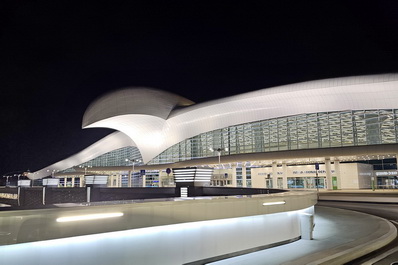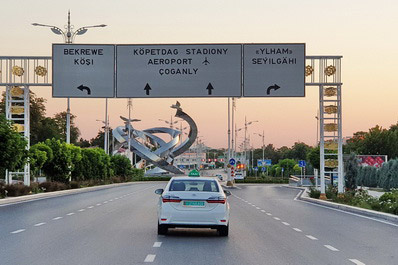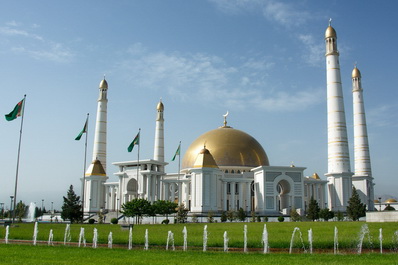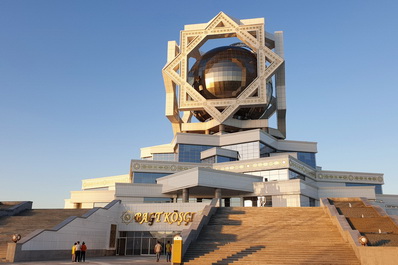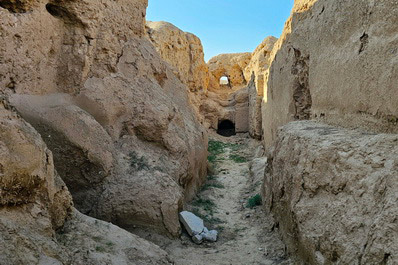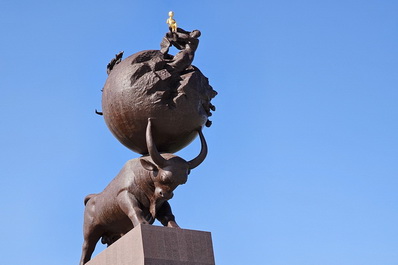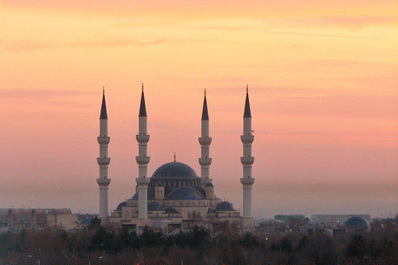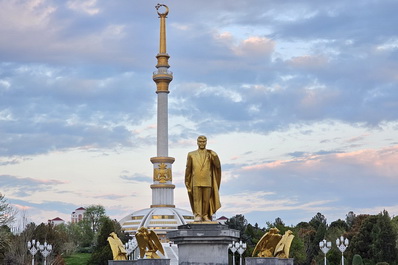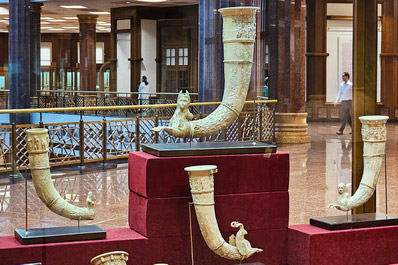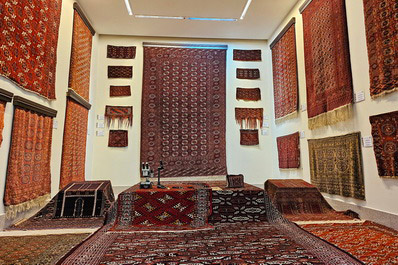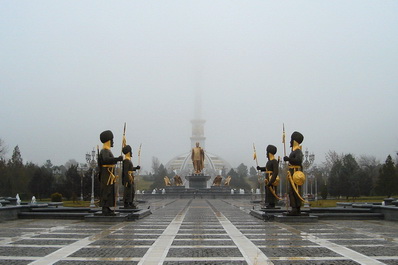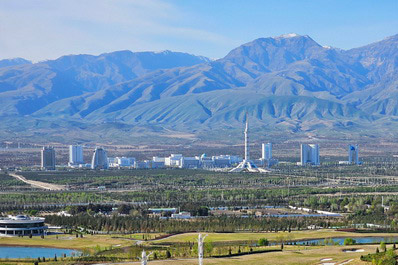Ashgabat, Turkmenistan
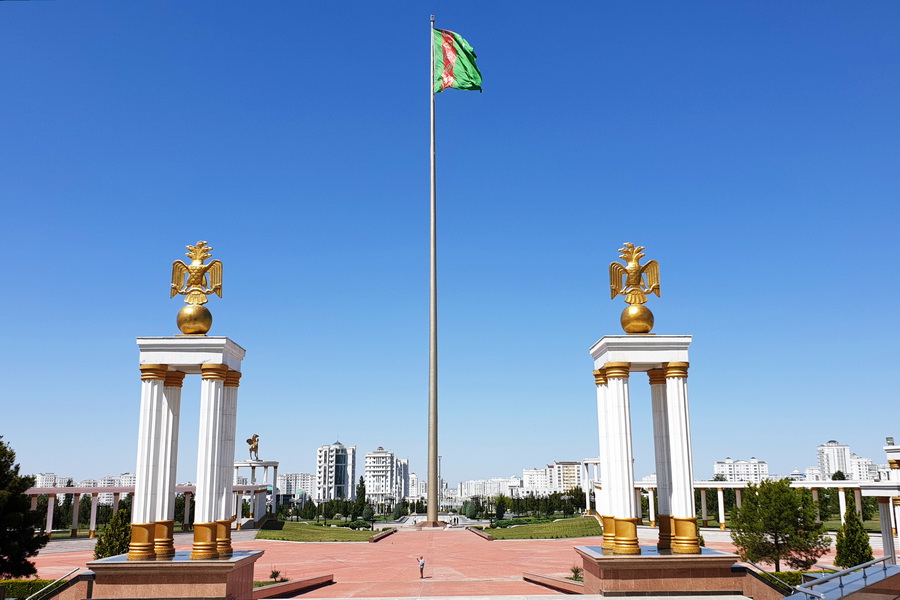
Center elevation: 273 m
Former names: Askhabad, Poltoratsk, Ashgabat
State language: Turkmen
Time zone: UTC+5
Nationality: Turkmen, Uzbeks, Russians, Armenians, etc.
Phone code: +993 12
Postal code: 744000–744901
Vehicle code: AG
Ashgabat is the capital and largest city of Turkmenistan, housing a population of 1 million in a country of 7 million. This cultural, scientific, and economic hub has seen rapid growth in recent decades, adding numerous monuments and white marble buildings, earning it the nickname "White City".
For tourists, Ashgabat offers a glimpse into the modern face of the country with its wide streets, tall buildings, monumental landmarks, and gilded sculptures, creating an unforgettable experience. The city boasts top-notch hotels with excellent service, intriguing museums, and various attractions. Nearby, you can explore historical sites like the ruins of Old Nisa and the earthquake-damaged Seyitjemaliddin Mosque in Anau.
Below is useful information to help you plan your trip to Ashgabat.
How to Get to Ashgabat?
Ashgabat's impressive airport, designed in the shape of a bird, hosts flights from major cities like Moscow, Istanbul, Milan, Dubai, and Seoul, with international flights typically available once a week. There are also daily domestic flights from other Turkmen cities such as Mary, Dashoguz, Turkmenabad, and Turkmenbashi.
You can also reach Ashgabat by car from Mary, Turkmenbashi, or Dashoguz. The city is close to the Iranian border, with the Gaudan-Bajgiran border crossing just 32 km south, open during daylight hours.
Additionally, Ashgabat has a train station and a bus station with services from Turkmenbashi and Dashoguz, though these methods are less popular among tourists.
Ashgabat Tours
Ashgabat offers a blend of modern and historical sights that reflect Turkmenistan's evolving story. Some of the most popular and visited landmarks include Independence Park and the Monument of Neutrality. The city also boasts interesting museums like the State Museum of Turkmenistan and the Carpet Museum. Remnants of the Soviet era, such as the Lenin Monument and Russian Bazaar, add a historical charm. A typical tour of Ashgabat often includes visits to the surrounding areas, featuring the Turkmenbashi Rukhy Mosque, the ancient Old Nisa settlement, and the Seyit Jamal ad-Din Mosque.
Exploring Ashgabat takes about a full day, but to truly experience all the sights and get a feel for the city's daily life, it's best to set aside two days. Keep in mind that Ashgabat is large, with attractions spread across different districts, so having a car for the tour is essential.
Brief History of Ashgabat
The history of modern Ashgabat spans nearly 200 years. While the exact date of its founding is unknown, it was mentioned in several documents in the mid-19th century as a small settlement with a fortress. Some trace its significant growth back to 1881 when the Russians, after conquering Central Asia, built a fort and declared it an administrative center, naming it Ashgabat.
Ashgabat steadily developed with the establishment of a post office, a railroad station, and other infrastructure. During the Soviet era, the city was briefly renamed Poltoratsk in honor of Pavel Poltoratskiy, a notable revolutionary. However, in 1927, the name reverted to Ashgabat, and it became the capital of the Turkmen SSR.
A pivotal and tragic event in Ashgabat's history occurred on October 6, 1948, when a powerful earthquake measuring 9-10 on the Richter scale devastated the city. Over 90% of buildings were destroyed, and the death toll is estimated to range from 60,000 to 176,000. This calamity is a solemn part of Turkmenistan's history, commemorated annually.
Since gaining independence in 1991, Ashgabat has experienced a construction boom, doubling in size with new residential areas, business centers, and hotels. In 2017, the city completed the Olympic City, the largest sports complex in Central Asia, featuring 30 sports facilities.
It's also noteworthy that the area where Ashgabat now stands was once home to the ancient city of Konjikal, founded in the 2nd century BC and destroyed in the 13th century. Additionally, just 15 kilometers west of Ashgabat lie the ruins of the ancient city of Nisa, the capital of the Parthian kingdom in the 3rd century BС.
Ashgabat Sights & Attractions
Ashgabat is known for its modern monuments that symbolize the new independent Turkmenistan and honor the country's leaders. Among the most famous sights are Independence Park, the Monument of Neutrality, the 133-meter high Flag of Turkmenistan, the "Bagt Koshgi" marriage palace, and the cultural and entertainment center "Alem".
The city also boasts several beautiful mosques. In the city center, you'll find the Ertogrulgazy Mosque (also known as Azadi), which resembles Istanbul's famous Blue Mosque. Just 11 km outside the city is the colossal Turkmenbashi Ruhy Mosque, known for its size and rich decoration.
Some of Ashgabat's most famous historical monuments are located nearby: the ancient city of Nisa, 15 km to the west, and the city of Anau with the Seyit Jamal ad-Din Mosque, 11 km to the east.
A couple of notable Soviet-era sights in Ashgabat include the Lenin Monument on an unusual pedestal and the Russian Bazaar with its unique architectural design.
Museums of Ashgabat
Ashgabat features two very interesting museums: the State Museum of Turkmenistan and the Carpet Museum. The State Museum has a rich collection of artifacts from the country's history, from antiquity to the present day, including art objects, historical documents, carpet samples, and other items. The total number of exhibits exceeds 130,000.
The Turkmen Carpet Museum is unique, showcasing 2,000 handmade carpets. The largest of these carpets, which covers an area of 301 square meters, is listed in the Guinness Book of Records. Carpets are a significant symbol in Turkmenistan, and the country even has a dedicated holiday to celebrate them, which is brightly commemorated at the museum.
In addition to these popular museums, visitors to Ashgabat can also explore the Museum of Wildlife, the Museum of Fine Arts, and the "Ak Bugday" Museum, which is dedicated to wheat and its cultivation in Turkmenistan.
Food in Ashgabat
Turkmen cuisine is rich in meat and fish dishes. When visiting Ashgabat, you should definitely try "chekdirme" (stewed lamb) and "yshtykma" (poultry). The city has several good restaurants, as well as cafes and bistros. Interestingly, tea is preferred over coffee in Ashgabat, so there are very few coffee shops.
Since Turkmen cuisine is heavily based on meat, vegetarians might find it challenging to find suitable options. The solution is to look for Chinese, Korean, or other international restaurants, which often have meatless dishes on their menus.
Transportation in Ashgabat
In the capital city of Ashgabat, the main modes of transportation are buses and cabs. There are 90 different bus routes covering the entire city, and many stops are air-conditioned. Cabs are represented by an official cab service and occasional private cabs. Public transportation costs 0.5 manat, while a cab ride costs an average of 20 manat.
Ashgabat also has marshrutkas and a monorail. Shuttle buses are inconvenient, as the drivers try to get maximum passengers. And the monorail has only 8 stops and covers only a small central part of the city.
Best Time to Visit
The climate in Ashgabat, as in all of Turkmenistan, is quite hot and desert-like. From April to September, the temperature during the daytime constantly rises above 40 degrees Celsius. In the city you can see large thermometers warning about the heat, and even traffic lights in the city are covered with chrome paint, as the usual black plastic melts from the scalding sun.
In winter, the temperature usually stays at +5 degrees Celsius, precipitation is rare, but there are incursions of Arctic cyclones from the north, and the temperature can drop to -10 degrees Celsius.
Thus, the best time to travel to Ashgabat is March, October and November. Winter months can also be chosen for a trip, but it is worth taking some warm clothes.

